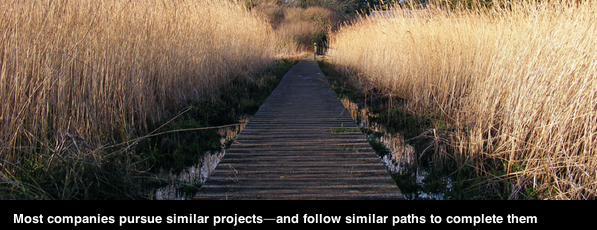Earlier this month we covered the benefits of standardized proposal content and how to apply standardization to proposal resumes and project sheets. The idea is not simply to cut-and-paste sections from previous proposals—but to take advantage of inherent similarities in requirements from one response to the next.
This week we’ll look at plans and approach sections.
Standardizing plans
Every RFP calls for one or more plans. Examples include implementation plans, solution plans, staffing plans, stakeholder communication plans, environmental plans, quality plans, safety plans—the list is long. Potential ways to standardize include:
Templates: Quality, safety, environmental, communications, transition and similar plans lend themselves to templates you can reuse and tailor to each prospect and project. As an example, for implementation, one IT company uses a templated plan with a custom section showing understanding of the project-specific challenges, followed by a Gantt chart and sections on governance, training, stakeholder management, etc. Each of these sections requires some customization—but contains mainly company approved content.
Structure: Solution plans in most cases need to be highly customized to the project and prospect. In this case use a standard client-friendly structure to guide your efforts. For example:
Paint a picture of your plan in action, addressing known hot button issues
Present the plan in a structured format, such as a three-column table
- Column 1: WHAT—Name of the step (stage or phase)
- Column 2: HOW—What will be done, and by whom
- Column 3: OUTCOME—Resulting milestone or client benefit
Provide proof your company and team have successfully executed a similar plan
Information architecture: For large, complex responses, proposal teams typically write all content from scratch. This is especially true where multiple companies are responding as a joint venture team. In these cases, you can still benefit from taking a standard approach to organizing sections.
This content-agnostic approach uses prompts to structure responses as follows:
- Concepts or principles behind the plan
- Actions the team will take (what you will do)
- Related experience—proof you have been successful with this approach
- Links to the issuer’s requirements and hot button issues
Provide this or a similar structure at kickoff to help content drafters organize their content. Following a consistent structure ensures drafts include required information and creates logical consistency across the proposal, signalling the presence of unified thinking.
Balance efficiency with quality
Whatever techniques you use to make proposal drafting more efficient, never put proposal development on autopilot.
Instead, take every opportunity to demonstrate understanding, respond to the issuer’s key issues and to position your company and solution against competitors.


